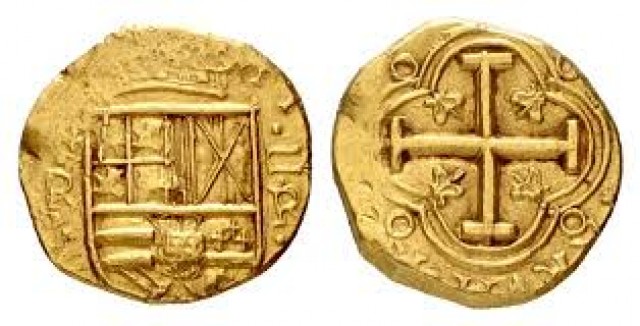
Published at 4th Oct 2009
Modified at 13th Mar 2018
Complicated Monetary Systems
Nowadays it is so simple to calculate a daily life transaction. Each country has a national currency, with different names but basically the same units, and eventually a subdivision, like a penny for a pound or a cent to a dollar, usually 1/100. But it was a time when the monetary system was much more complicated than a simple division by 100.

For example, if you need to pay a dollar and 39 cents, you know that you can pass 5 quarters and receive back one cent and one dime. Or you can pass two dollars and you receive 1 half and two nickels and a cent…
The Greeks had a much more complicated system. The currency was a talant- a unit of weight around 26-28 kilograms…
Normally, no coins of this kind exist… but when you went to buy something you use the subdivision. One talant was equal to 60 “mina” and each mina to 100 drachm. The drachm was a coin around 4,5 gr, in normal standards. And it was also divided in 6 obols, or 3 halfobols, or 2 thirdobols. And of course the silver drachm wasn’t equal to the gold drachm. Complicated? Not as in Roman times…
Shop now for $10 off your first Purchase
The Romans used a silver-gold ratio. One aureus was 1/72 the weight of the standard unit of monetary measure, the “livra” – or pound.
It was equal to 25 denarii, minted in silver. Of course, half denarii and half aureii were minted.
One denarius was equal to 4 copper sestertius and one sestertius to 2 dupondius or 4 asses. The as and the dupondius was the same size but on the dupondius the emperor had a radiate crown and not laurels. One as was also divided in 2 semis or 4 quadrans. So one aureus =25 denarii=100 sestertii=200 dup as=800 semis=1600 quadrans. Simple? Try to calculate how many aureus you have if you own 47 copper asses…
In medieval France, the most valuable coin was “the gold louis”- louis d’or. It was made from gold and had some halves or double louis… it was divided in 4 ecu, minted in silver and each ecu was equal to 6 livres made from silver. One livre was equal to 20 sols and each sols was equal to 12 denier. But was also equal to 4 liard, so the liard:denier ratio was 1:3
Or simpler
1 louis d’or=4 ecu=24 livres=480 sols=1920 liards=5760 denier.
No problem, but only if you don’t have to work with coins all day and give the change…
In Britain, the system was somehow the same. One pound was equal to 20 shilling, each shilling to 12 pence and each pence to 3 farthing. So one pound is 240 pence or 720 farthings…
Russia had a similar problem. A rouble was made from silver. It was equal to 2 poltinik (“ half”) each poltinik was equal to polupoltinic (“half of half”). One poltinic was five grivna. A grivna was 3 altin and a kopeek and each kopeek was two denghi (“money”) or 4 polushka.
Peter the Great realized that the system was much too complicated and decided to take the rouble and the kopeek as the new units, in a ratio of 1:100. So a poltinik was 50 kopeek, a polupoltinik 25, a grivna 10, an altin 3, and denghi was ½ while the polushka was ¼ of a kopeek.
Now, by replacing the name of a coin with a numeral, everything became simpler and soon, every country in the world adopted the subdivisionary system.
Stefan Vasilita
Search the Coin Encyclopedia
Related Articles
Learn about international Coin Grading Systems at Coins-Auctioned.com. Compare grading systems from the UK, USA, France, Spain, Italy, Portugal, Germany and The Netherlands. Coins-Auctioned.com for connecting collectors and dealers since 2009.
6th Oct 2023
Understand and identify number systems used on coins. From Arabic to Roman, Islamic to Ethiopian. Deciphering the code. www.coins-auctioned.com
16th Feb 2024
Latest Articles
The Royal Mint in the UK has announced it's intention to stop minting circulation coins for foreign countries.
19th Jul 2024
Seated Liberty coinage describes a series of silver US coins circulated from the 1830s to 1890s with similar designs. Uncover the origins, varieties, and key dates of each Seated Liberty coin!
16th Jun 2024
Roosevelt dimes are 10 cent US coins minted since 1946 featuring former President Franklin D. Roosevelt. Learn the history, values, and varieties of Roosevelt dimes in this comprehensive guide!
4th Jun 2024
Article Categories
Collection of articles providing lots of useful information on coins through the ages.
30 Articles


